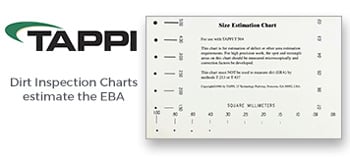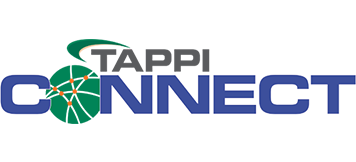|
Preflight and post-flight: new rules for quality control in the print industry
By Patrick Marchese, Markzware Software
Learn about the challenges our customers in the print industry face as digital printflows become the norm-and what they can do to meet those challenges.
Just more than a decade ago, CTP (computer-to-plate)
and, subsequently, direct-to-press digital printing began to profoundly
alter the playing field for the print and publishing industry. Since that
time, the vast majority of printers have successfully completed the transition
from film to digital file exchange, but with that paradigm shift came
some new dilemmas.
For example, on which types of digital files should the print workflow
be based? There are certainly plenty from which to choose: PostScript,
EPS, PDF, CT/LW, PDF/X-1a, PDF/X-3, TIFF/IT-P1 and so on. Also, who should
be responsible for creating these final exchange formats—the content
creator, a prepress vendor or the printer? And what tools and best practices
should be put in place to ensure file integrity and a print job’s
ultimate success?
Great strides have been made by software developers to bring to market
the tools needed to verify digital file integrity—regardless of
the format—but there remains a lot of work to be done in the area
of best practices. Merely having these tools available to the supply chain
manufacturers does little to ensure that they are appropriately applied
to the process, particularly when each workflow is virtually unique.
Some printers, for example, prefer their clients to supply locked-down
rasterized, or RIPd, files that have been verified for completeness and
integrity before they are submitted. Others prefer their clients to submit
the native application files, enabling the printer to control the creation
of the final RIPd files, and, of course, to pass on this processing cost
to the customer.
Regardless of the methods, what all digital workflows have in common
is the need for not just one but several quality-control checkpoints to
maximize success rates and customer satisfaction.
Preflight to the rescue
If you poll a few commercial or publication printers, you’ll find
that one of the woes they have in common is receiving problematic files
from their clients. Desktop publishing tools have both advanced the print
industry and complicated it. Seemingly anyone with access to a software
application like QuarkXPress, Adobe InDesign or Microsoft Publisher fancies
themselves a graphic artist, but it requires a high degree of skill and
education to create a digital file from these applications that will actually
work in the prepress and pressroom environment. Many printers profess
that more than half of the files they receive from their clients are replete
with errors, such as improper color space (RGB vs. CMYK) images, low-resolution
graphics and text, missing fonts and incorrectly formatted trim and bleeds.
In the days of film, it was easy to catch these errors at the prepress
stage; when film was generated, you could tangibly manipulate it—lay
it on a light table, measure densities, find scratches, etc. But with
a digital file, it’s not as simple. To manually “look inside”
a file, a graphic designer or prepress operator must open it in the native
application and check each and every element to ensure that all the parts
are present and accounted for—and to manually do this required a
great deal of time and attention to detail. This is the reason why software
developers responded with file verification tools that, in a matter of
minutes, can scrutinize the digital files to ensure that it’s compliant
with the output specifications.
The term “preflight” has—perhaps inappropriately—been
adopted en masse by the graphics arts community to generically refer to
file verification at any stage in the print or multimedia workflow. But
in today’s digital workflow, it is common knowledge that this process
of quality controlling digital content files actually occurs (and rightfully
so) at various stages in the manufacturing chain.
Markzware Software, for instance, splits the definition of file verification—the
company distinguishes between the process that happens at the creative
stage, during document creation within the native application file (preflighting),
and the verification that must take place at the prepress phase (post-flighting),
when the final file format is created and used to drive digital contract
proofing, platesetting or digital printing.
Why verify digital files more than once? Some may argue that this is
a blatant redundancy that digital workflow was supposed to help alleviate.
The answer becomes clear when you look at a typical file exchange.
Take, for example, the workflow relationship between a magazine publisher
and its printer. At the publisher, one typically finds an art director
who is pulling elements (text, graphics, partial ads) from a variety of
sources and compiling them into a single page within the native application—QuarkXPress,
for example. The resulting file (still a native app) may be the format
that is sent on to the printer. Once there, the printer may be responsible
for applying things like trapping and RIPing the file to a PDF or whatever
the file format they’ve chosen to drive digital proofing or platesetting.
If there are problems inherent in the file sent to the printer, several
scenarios can unfold. The printer, during post-flight, detects the problems
and alerts the customer. In some cases, the printer may take on the challenge
of fixing the file and conducting a new proofing cycle with the customer
(at the print buyer’s expense) or they may choose to bounce the
file from prepress entirely and require the publisher to resubmit a new
file. The cost to the print buyer is both time and money.
But had those problems been detected at the native application stage,
they could have been immediately addressed by the publisher, saving both
partners time and money to resolve.
Pre- and post-flight in practice
“In every … automated type of production, two basic quality
checks are needed for every major task: input control, usually called
preflight—when the quality of the incoming raw materials or parts
are verified just to make sure the task at hand can be performed with
a certain guarantee of success—and output control, or post-flight,
where the result of the task is checked to see if it meets the criteria
to be sent to the next stage,” explains Jan Cox, sales development
manager, workflow systems, Agfa Gevaert NV.
At Cranford, NJ-based The Ad Agency, President Jeffrey Bischoff knows
how important file verification is to ensuring customer satisfaction.
Working mainly in popular applications like QuarkXPress, Photoshop and
Illustrator, his company designs a full gamut of print media, including
everything from brochures to billboard-sized marketing messages. Every
file The Ad Agency creates is run through Markzware Software’s FlightCheck
Collect, which gathers and verifies every element that should reside within
the file, before it is forwarded on to a printer.
“Before we had software like this at our disposal,” Bischoff
recalls, “checking the files was a lot more of a hassle. It’s
safe to say that it’s been a savior for me, because if I send out
something that’s incomplete or incorrect—even if the printer
catches it on their end—who’s in trouble? Me!”
The same distinguishing terminology—preflight vs. post-flight—may
also be used to categorize the software tools designed for specific workflow
stages, such as creative or prepress. And the good news is that there
is a healthy competition among pre- and post-flight developers that have
produced applications that support virtually any file format, workflow
stage and budget. There are a plethora of tools being deployed by printers
and prepress suppliers to post-flight files—each appropriate to
a specific workflow volume and output file formats.
About the author: Patrick Marchese is the co-founder
and president of Santa Ana, CA-based Markzware Software. He can be reached
for comment at pat@markzware.com.
|





